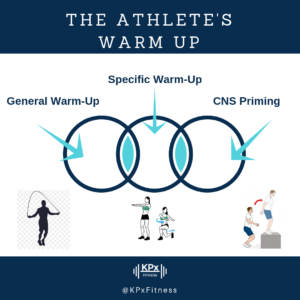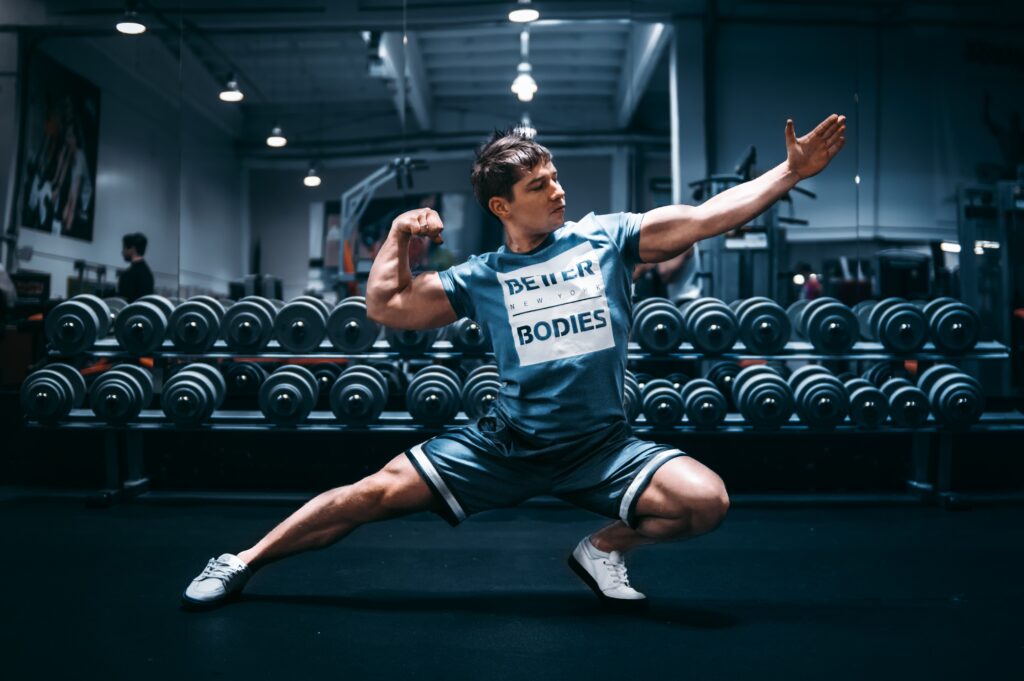Your warm up sucks. Here’s what to do about it.
The old stand-by of doing “5 minutes on the treadmill and some random stretches” before you lift is as outdated as the high school gym teacher who taught you it was the right way to warm up. Worse, this weak excuse for a warm up could expose you to unnecessary injuries during your workout. Now that you’re older and wiser, it’s time to improve your warm up and increase your workout performance, too.
(Psst… your gym teacher and those fitness “gurus” telling you to foam roll and do a hundred different mobility drills are both full of it. You don’t need to waste precious gym time rolling around on the floor or doing endless activation drills that bore you to tears.)
There are three parts to an effective warm up practice: the general warm up, specific warm up, and explosive/plyometric drills. The goal of each stage is to get blood flowing, activate your muscles, and prime your nervous system for the work you’re about to do.
Read on to learn how to implement this quick warm up strategy that will improve your workout performance and reduce your injury risk – without wasting half your training session on boring mobility drills.
Step 1: General Warm-Up
The purpose of the general warm up is to literally “warm up” your tissues by increasing your heart rate and getting blood flowing faster to surface tissues – you know, the muscles you’re about to work. This can include five minutes on the treadmill, but my preferred method are dynamic warm up drills. Think of these as “moving stretches.” Drills like walkouts, inch worms, knee pulls, butt kicks, and various crawling patterns are great to get your heart rate up before moving on to more specific warm up drills.
Step 2: Specific Warm-Up
Next, you should do some movements that mimic what you’re about to do during your workout. A great example would be knocking out some push ups on a bench press day. Bodyweight squats and lunges would be a good choice for leg day.
You can also throw in drills to target specific mobility restrictions that would prevent you from pushing yourself during your workout. For instance, limited hip mobility can interfere with deep squatting. You’d want to tackle that with an exercise to open up your hips and “turn on” your hip internal and external rotators. The 90-90 drill is a perfect choice here. Another drill I like for opening up the hips is a goblet squat with an iso-hold in the bottom position.
There are a million different drills you could use, and I can’t address them all here. The take-home point is to pick a couple that address your unique needs, and knock them out quickly so you can get lifting. Spend about three to five minutes tackling mobility and activating your weaker muscles. One to three total exercises for a couple sets of challenging, but not fatiguing, repetitions is all you need.
Step 3: CNS-Priming
Finally, it’s time to prime your central nervous system (CNS) with plyometric drills so that your lifts are more explosive and more effective. When your CNS is fired up, your lifts will be more explosive, effective, and also, safer.
Here are some of my favorite plyo drills, grouped by the main lift you should pair them with:
- Bench press – med ball chest pass; plyometric push ups
- Overhead press – light, snappy push presses
- Rows and Pull/Chin-ups – medicine ball slams; ballistic kettlebell rows
- Squats – box jumps; jump squats or lunges
- Deadlifts – box jumps; broad jumps; kettlebell swings
Stick to 3-5 sets of 3-5 reps and focus on making each repetition as explosive and forceful as possible. Rest 60-90 seconds between plyometric sets.
Piecing Together Your Warm Up System

The beauty of this three-part system is that each step feeds off the step before it. Instead of 1+1+1=3, you can flow fairly seamlessly from part one, to two, to three and take your body from Tin Man to turbo-charged in about ten minutes.
Think of a Venn diagram with three circles in a row; parts of each circle overlap. So your general warm up can include drills that mimic the movements in your workout, thus accomplishing both the “increased core temperature” and “prepare your body for the movements you’re about to do” parts of the warm up system. A good example would be pairing walkouts and dowel good mornings before deadlifting. You’d then choose an explosive exercise like a box jump or kettlebell swing to prime your nervous system before starting your lifting sets.
Using the drills in this system, your body will be ready for whatever you throw at it so you can focus on what you come to the gym for: lifting heavy weights and actually getting stronger without fear of injury.

